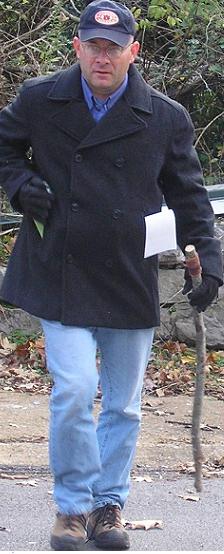The Georgia in the Civil War Message Board
CPT Roberts and Mr. Martin,
I totally disagree with Mr. Bearss's assessment in the excerpt you included in your posting (last paragraph). I am well aware of his credentials and heard him speak on a couple of occasions (other than Ken Burn's Civil War series) but the blame on disposition at Baker's Creek (a.k.a Champion Hill) cannot be totally placed on the regiments, brigades, or even the division.
Pemberton was groping around in the dark after the Federals. He had to scrounge cavalry and place them under Colonel Wirt Adams ordering him on May 10th to, “harass the enemy on his line of march, cut his communications wherever practicable, patrol the country thoroughly,” all the while keeping Brigadier General John Gregg informed at Vicksburg. How broad of a mission is this for a cavalry force of barely a regiment?
When the army moved from Vicksburg eastward, Adams was ordered to deploy an advance guard one mile in front of the army’s main body with another company in front of his force, a trail company behind the army’s main body. Hear we have an additional mission the cavalry has been given to do.
Upon arrival in their position of the night of the 15th, he was told by Pemberton which approaches in their front to picket. He was advised to send out scouting parties to obtain the location of the Federals. The disposition of Adams’ cavalry would only allow for local security and give little if any warning of enemy contact. Its employment did not allow Pemberton time and space to maneuver his force if contact was made. It certainly was not deployed in depth or focused on the main body of the enemy to meet any of the instructions outlined by Pemberton on May 10th. Pemberton tried to get information from the civilians but was unsuccessful. All of these are violations of the employment of Cavalry. The result was his army being poorly dispersed and deployed to ensure their own security if attacked.
Stevenson’s Division did not halt for the night until after mid-night in the early morning hours of May 16th. General Alfred Cumming, who had assumed command on May 13th of the brigade that included the 34th, 36th, 39th, 56th and 57th Georgia regiments described the army’s disposition that night as being one that could not efficiently go into the attack or defend itself against one. The brigades stopped in a “huddle” and doubled up in some spots, a positioning from which they could not easily extricate themselves if the situation arose. The men were quickly awakened at dawn (approximately 5:02 AM) as the commanders began to scramble to get them into position. It also did not help that about two Federal divisions were stacked up and penetrated in a brigade width area and that it was most of Stevenson's Division first time in real combat. Bad Ju-Ju!
Who were the sinners and who were the offenders? It is the responsibility of the Army Commander, in conjunction with his Cavalry Commander, to find the enemy and maneuver his forces to a place of advantage to attack and destroy the enemy. During the Civil War, a division commander normally did not have cavalry under his operational control to find out what the terrain was like that he was advancing over an that was the responsibility of the Army Commander.
I hope this helps.
Respectfully,
Gerald D. Hodge, Jr.
Lieutenant Colonel, U.S. Army
War Between the States Historian
M.A. Military History - Civil War Concentration
Historian: 39th Georgia Volunteer Infantry Regiment

Messages In This Thread
- Georgia Ancestors
- Re: Georgia Ancestors
- Re: Georgia Ancestors
- Re: Georgia Ancestors
- Re: Georgia Ancestors
- Re: Georgia Ancestors